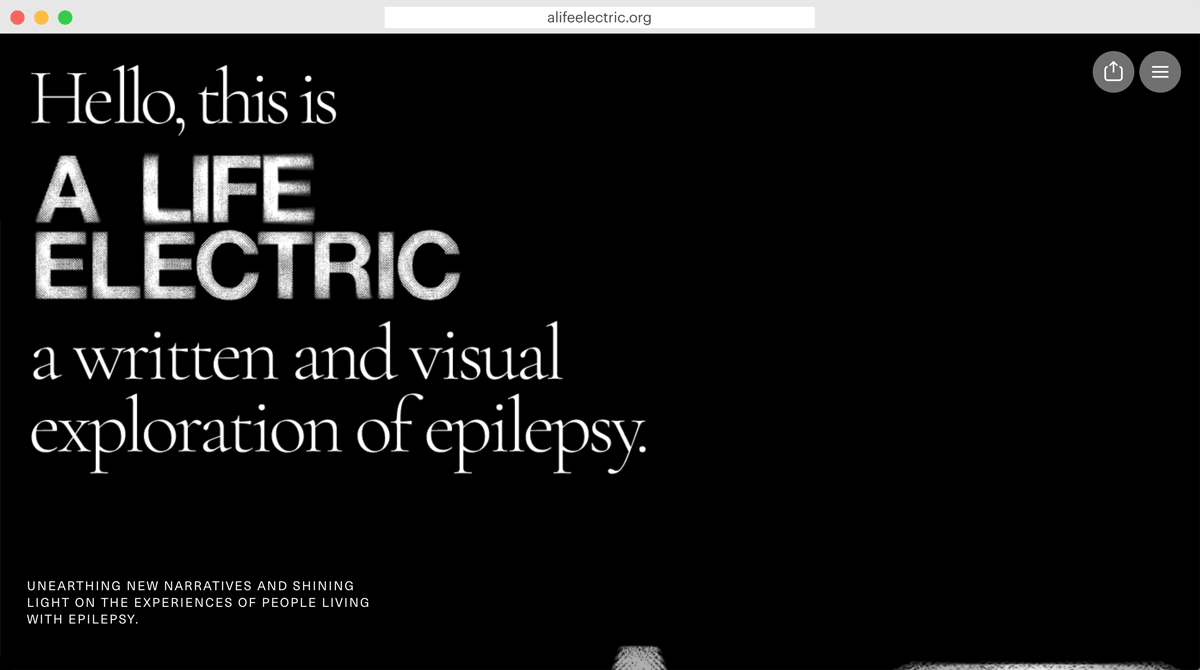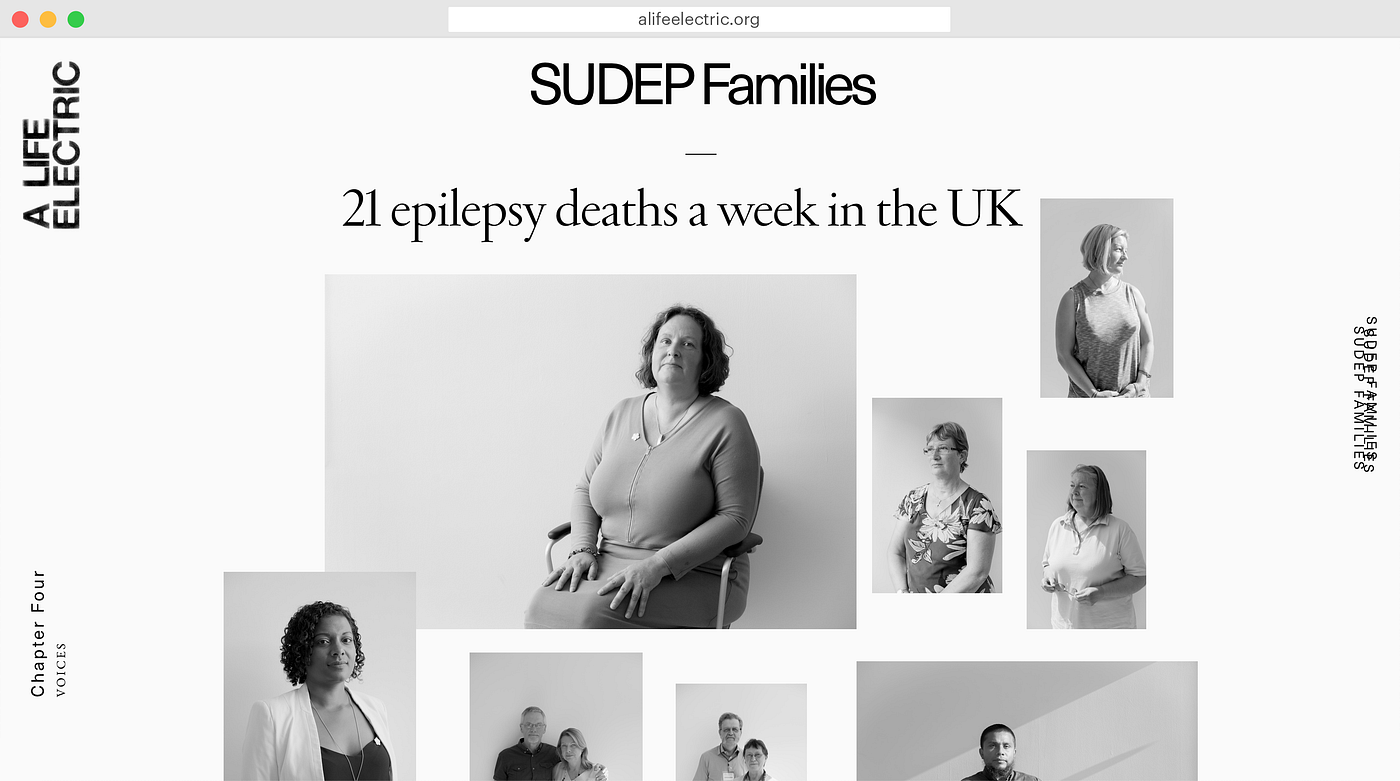A Life Electric: journalist takes Readymag to kick off epilepsy awareness campaign
Fraser Morton and the designer of the project, Ali Kelly, told us about the story behind this comprehensive work.

A Life Electric is a multimedia magazine covering the topic of epilepsy and the social stigma around it. Devised by Scottish journalist Fraser Morton, it aims to pave the road for a future documentary film and a book. Fraser and the designer of the project, Ali Kelly, told us about the story behind this comprehensive work.
A different voice to epilepsy projects
Fraser Morton: For most of my career I have been drawn to human-interest stories. Then about a year ago, I started a creative writing class — and I began experimenting with free writing techniques, which led me to write about my brother who died of a severe epilepsy attack (SUDEP, or Sudden Unexpected Death In Epilepsy) when he was 19. I really didn’t understand what he was going through when he was young. Through my writing it became clear that I wanted to find some answers.

Epilepsy is quite misunderstood in society and in culture. It’s highly stigmatized and many people with it are discriminated worldwide. I became more interested in exploring the topic and decided to embark on a multimedia documentary project and bring a different voice to epilepsy.
It’s a really difficult topic to talk about. I think my brother’s story has helped me open doors to personal interviews with people living with this brain condition. So far, it has allowed me to reach more than 100 people for interviews.
Huge and individual subject
We started the project together with my girlfriend Eszter Papp, who’s a photographer. I made a post on social media that I was looking for characters. The response that day was really amazing. So many people, even friends for whom I didn’t know that they have epilepsy, messaged me.
We got more and more interested in the subject, and I reached out to SUDEP Action charity and the International Bureau for Epilepsy (IBE). We arranged to go to the bureau’s conference in Bali — there we set up a photo booth and a camera, and invited people to do interviews. We met people from Africa, Asia, Europe, and all over, and that’s where we really started to understand how big and individual the subject is between countries and cultures.

There is huge disparity in treatment around the world — in Southeast Asia and in Africa people with epilepsy go to seek spiritual help rather than get medical assistance. I also went to the annual SUDEP Action conference to film and interview families bereaved by SUDEP.
Readymag comes in
By December 2018, it was close to a year that me and Eszter had been self-funding the project. To stir interest and potentially find supporters, we decided to split the project and show some of the work that we’ve done. We decided to do part one like an online experimental documentary magazine, then make a documentary film, and then publish a book plus organise a photo exhibition.
A friend of mine told me about Readymag, I checked it out and I was like: “This is it. This is what we need.” As I’m from a newspaper and editorial journalism background, I’m really into multimedia. I knew that we need to wow the audience with something visual — epilepsy is not a subject that a lot of people are interested in. Readymag was the right tool for it.
I had a vision for the project: I wanted all texts, design, photography, and film to tie in and complement each other and this way create a signature. That’s why I wanted one designer to do the whole job. On Behance I met Ali Kelly, and I loved his work. We never met in real life, but I offered him to join the project and he agreed.

In between controlled and uncontrolled
Ali Kelly: The whole idea of this project is talking about something that is in the middle of control and uncontrolled. I had to make interweaving design to coexist with the written narrative. Using actual language to express the points was also quite important.
After our initial talk with Fraser, I pitched three concepts to him, all of which were in the form of Joy Division songs — Ian Curtis, the leader of Joy Division, had epilepsy. These songs were She’s Lost Control, Disorder, and Atmosphere. Of them, we chose the first. She’s Lost Control is a concept referring to the spontaneous and instantaneous chaos of an epileptic seizure striking when you don’t expect it.
I translated this concept into visual and typographic anarchy. In the project, you can see a lot of visual distortion and chaotic typographic treatments. For example, when you scroll down some pages, you can see the text going glitchy — that are GIFs on the background.

As A Life Electric is centered around text, I thought that using typography as the key visual graphic would make total sense. We talked a lot with Fraser about the individuality of the condition. To highlight this, I created a custom font which blends together Helvetica, human thumbprints, blurs, and distortion over the top.
Getting support
Fraser Morton: We launched the experimental documentary magazine on February 11, which is the International Epilepsy Day. Now we’re trying to get support for the future film. Actually, we’ve already got some: my University published a link to the magazine in their newsletter and on their website. The International Bureau for Epilepsy sent a link to the magazine to all their chapters — that’s about 150 countries around the world, and put it on their social media. Then we also had some media coverage in the United Kingdom, which was fantastic.

A lot of people who have lost their relatives in SUDEP wrote to me and said that they were really happy to see the projects. We have also secured a new partner called Empatica—a tech company who help people with epilepsy by creating devices using artificial intelligence. They are supporting our film, which we are grateful for.